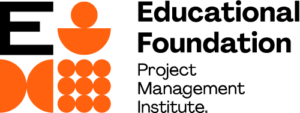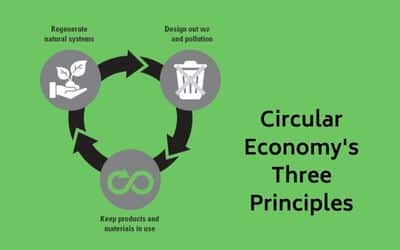Overview
Grade level
Time
Introduction
Creating a Waste-Free Future
Imagine a future where there is no waste and no pollution. Is this even possible? If we look to the natural world, the answer is yes! Waste does not occur in nature. One organism’s waste is another organism’s food. Nutrients and energy flow in a cycle of growth, decay, and reuse. This is called a circular system.
Today’s world works as a linear system (think of it as a straight line rather than nature’s circle). This linear system follows a path of taking natural resources, making products, using them, and then throwing away anything that is left over after we are done with it—from empty water bottles to old cars. And while some
things in a linear system are recycled, today’s approach does not have a way to capture all the resources and materials that make up the items we throw away or the waste that’s created in the original production process.
But what if we followed nature’s circular system and created a circular economy?
What is Circular Economy?
It is modeled on cycles in nature where nothing is wasted and everything feeds back into the systems that keep life in balance. Circular economy is based on three principles:
-
Design Out Waste and Pollution
Waste and pollution are not accidents but the consequences of decisions made at the design stage. What if we looked at waste as a design flaw? How can we use new materials and technologies to ensure that waste and pollution are not created in the first place?
-
Keep Products and Materials in Use
We can design some products and components so they can be reused, repaired, and remanufactured. But making things last forever is not the only solution. We should be able to get the materials back so they don’t end up in landfills.
-
Regenerate Natural Systems
In nature, there is no concept of waste. Everything is food for something else; a leaf that falls from a tree feeds the forest. By returning valuable nutrients to the soil and other ecosystems, we can enhance our natural resources.
All around the world, engineers, city planners, and government leaders are using the principles of a circular economy to develop methods, systems, production practices, and materials that don’t generate waste or pollution and allow nature to recover. Materials are continuously reused, consumption is sustainable, energy
sources are renewable—and people, animals, and plants thrive.
Your STEM Project:
Redesign the life cycle of a material or product so that nothing is wasted, no pollution is generated, and natural systems are protected or regenerated.
Download Instructions & Project Management Templates
Challenge Instructions
Project Management Templates (Word version)
Research Resources
Academic Standards & UN Sustainable Development Goals
This project meets the following Next Gen Science Standards:
- HS-LS2-7 Ecosystems: Interactions, Energy, and Dynamics
Design, evaluate, and refine a solution for reducing the impacts of human activities on the environment and biodiversity.
- HS-ESS3-4 Earth and Human Activity
Evaluate or refine a technological solution that reduces impacts of human
activities on natural systems.
- HS-ETS1-2 Engineering Design
Design a solution to a complex real-world problem by breaking it down into smaller, more manageable problems that can be solved through engineering.
This project is aligned with the following United Nation’s Sustainable Development Goals:
This activity was developed through the support of the Project Management Institute Educational Foundation.



Hi, I am looking for a 5th grade sciSTEM project. I am a 5th grade student.